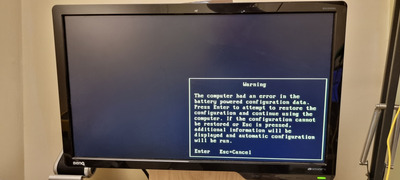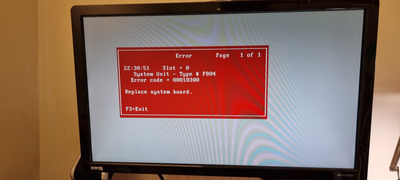First post, by silvervest
Hey folks, trying to recover a PS/2 Model 70-386 I acquired recently, there have been a lot of repair work so far (PSU was dead, floppy had leaked caps and corroded traces) but I've finally got it booting and reading diskettes!
The problem I'm facing now though, is that when I put the 70/80 reference disk in, it boots into the setup program, does auto-configuration, then restarts but upon restart, it still gives 162/163 and wants me to go into the setup program. When I do so, I get the black/yellow warning screen attached, stating it had a problem reading from battery backed memory and it wants to try to recover or run auto-config again. Either option leads to loading for a bit, then it restarts and goes around in circles.
I can hit F1 without the ref disk in to get into BASIC but nothing else. I've also tried taking out all the cards and HDD out, just to the planer, backplane and FDD and same thing. With the MCA adapters I have installed, it detects them during the auto configuration and needs the option files added, so that seems to be working. The CMOS battery is a brand new one, and I've tried just feeding it 6v from my benchtop PSU as well.
Any ideas?

